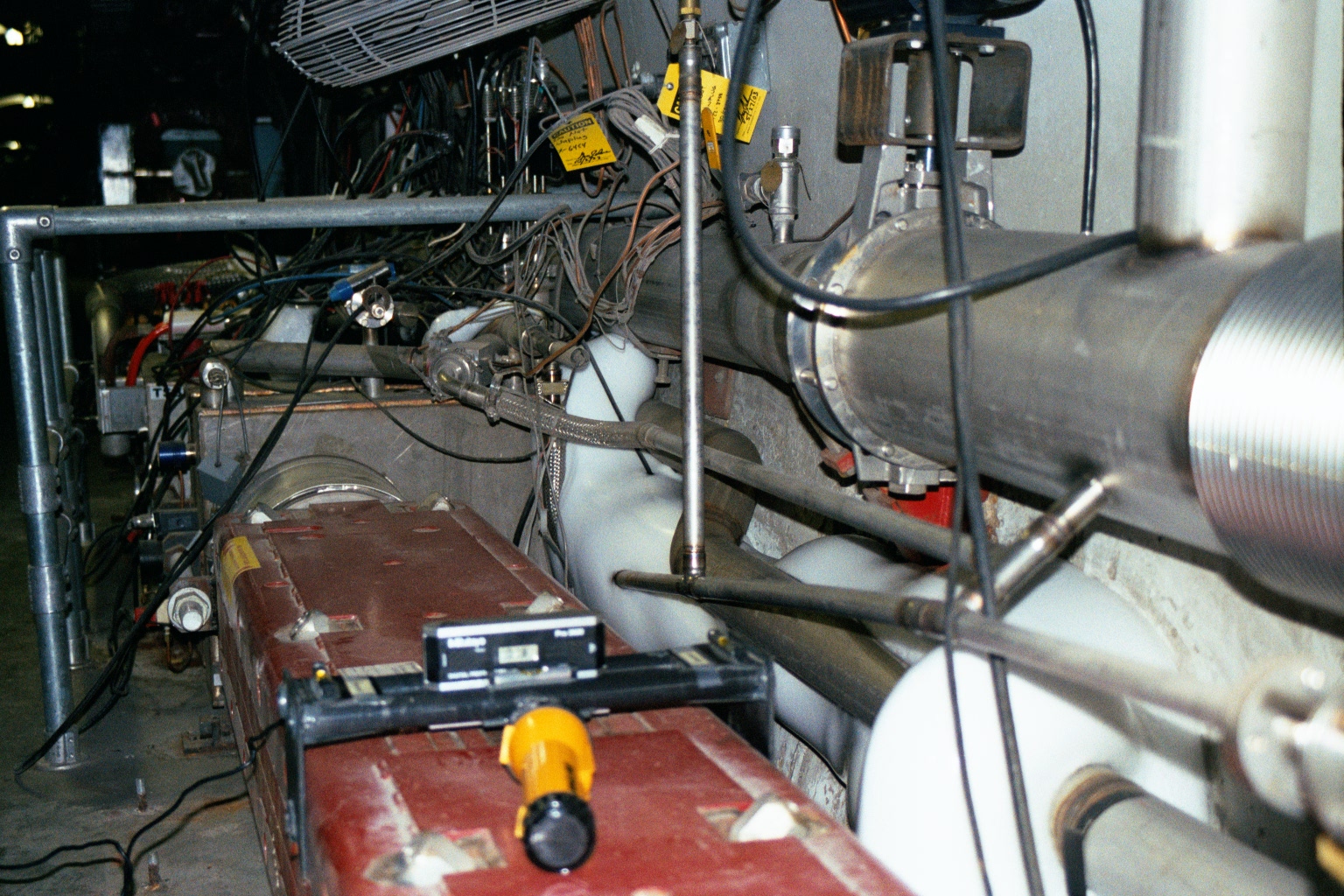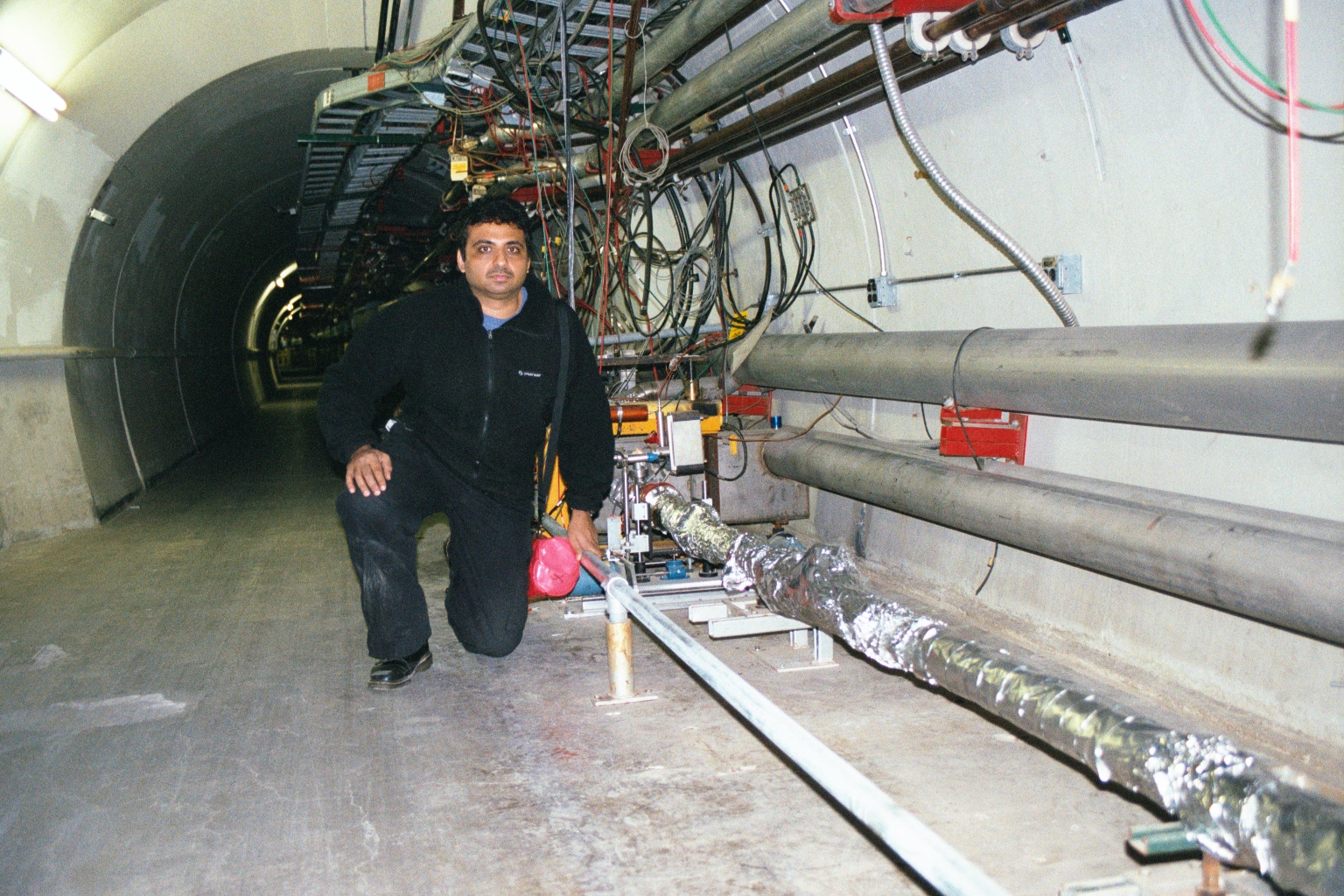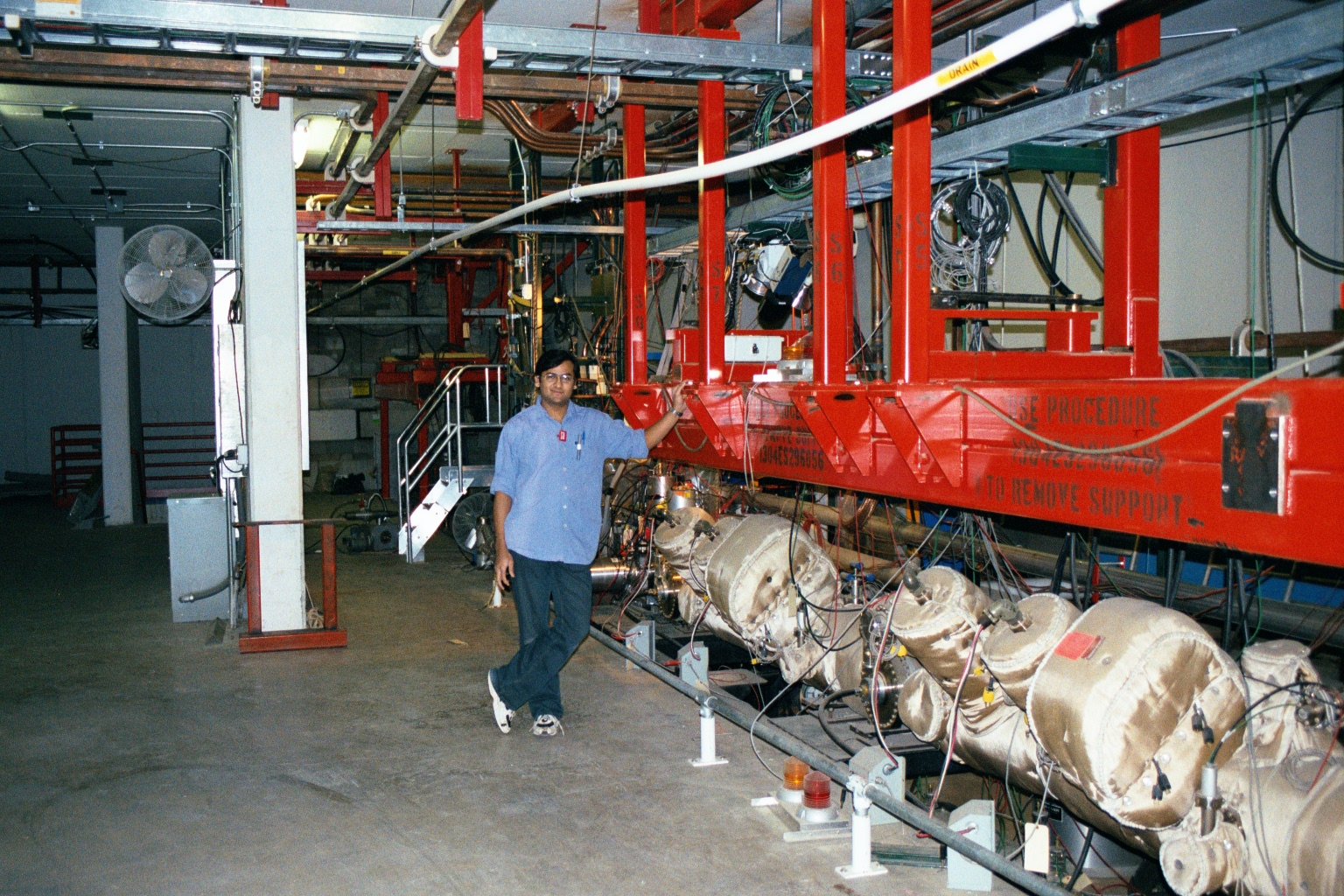Magnet Roll Measurements
In March 2004, I had a chance to work in the Tevatron tunnel to perform magnet roll measurements for half the Tevatron ring. I did this work
with
Farrukh Azfar (Oxford University).
The task was supervised by James Volk of the Beams Division, Fermilab.

The Tevatron ring is divided into sections, labelled A through F. The locations B0 and D0 corresponded to the CDF and DZero experiments, respectively.
The first magnet after the CDF collision hall (B0) is labelled B11. The magnets are numbered from B11 (after a collision hall) to B48 (before a collision hall),
followed by C11 to C48 and so on, with a few gaps in between. We did measurements for magnets B11 through E12, with a separate team doing the other half of
the ring.
Roll is the rotation of magnets around the direction of the beam: in all three directions (pitch, roll, yaw).
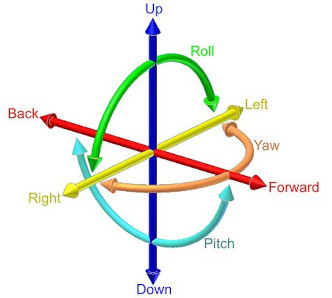
A description of rotation terms, from wikipedia.
Each magnet, for example B13, consists of a quadrapole magnet (B13-1), followed by cryogenic equipment and/or spool (B13-1A, 1B, etc.), followed by 4 dipole magnets
(B13-2 to B13-5). Thus each numbered-magnet consists of 5 magnets where the roll is measured in each direction at two places on each magnet.
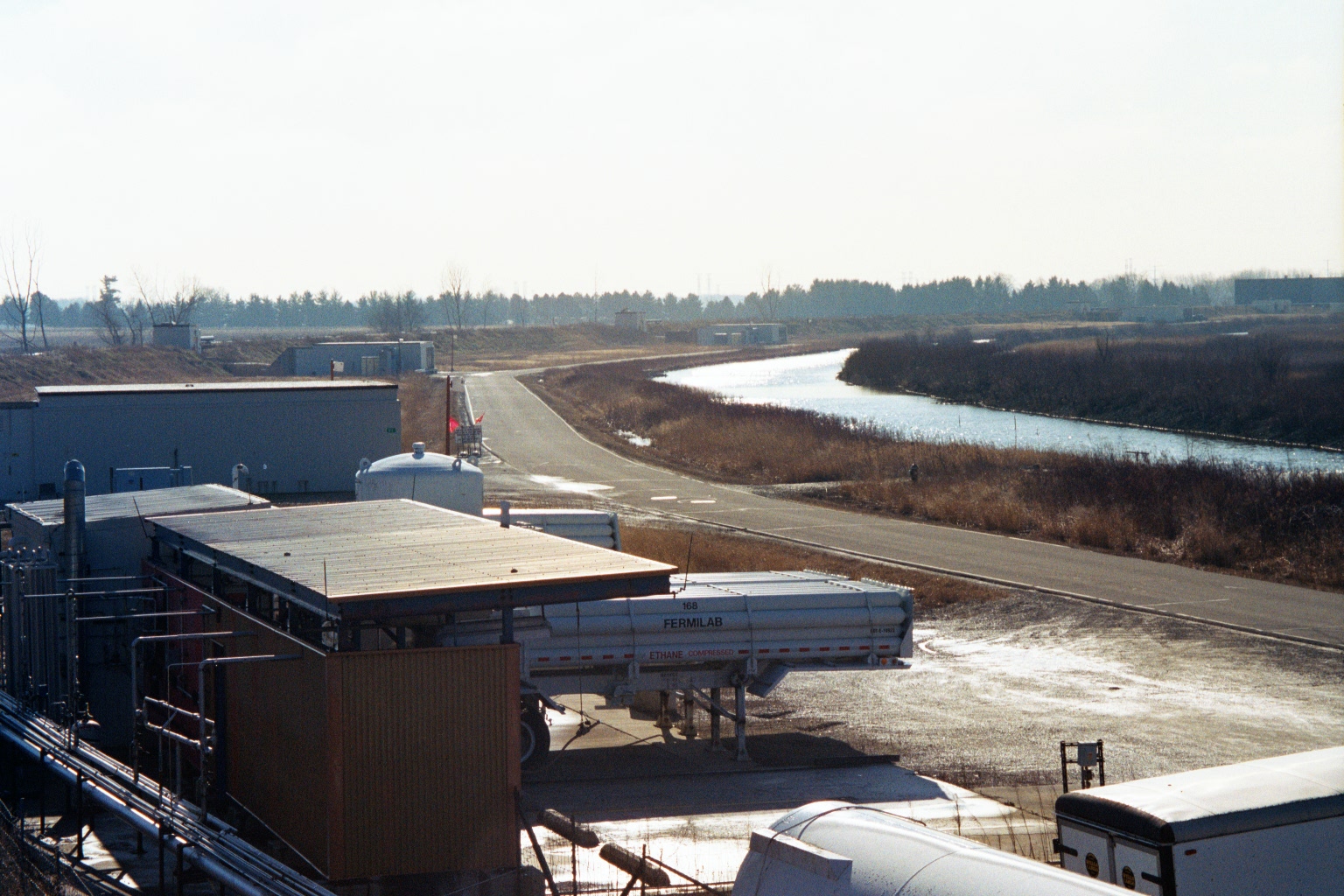 |
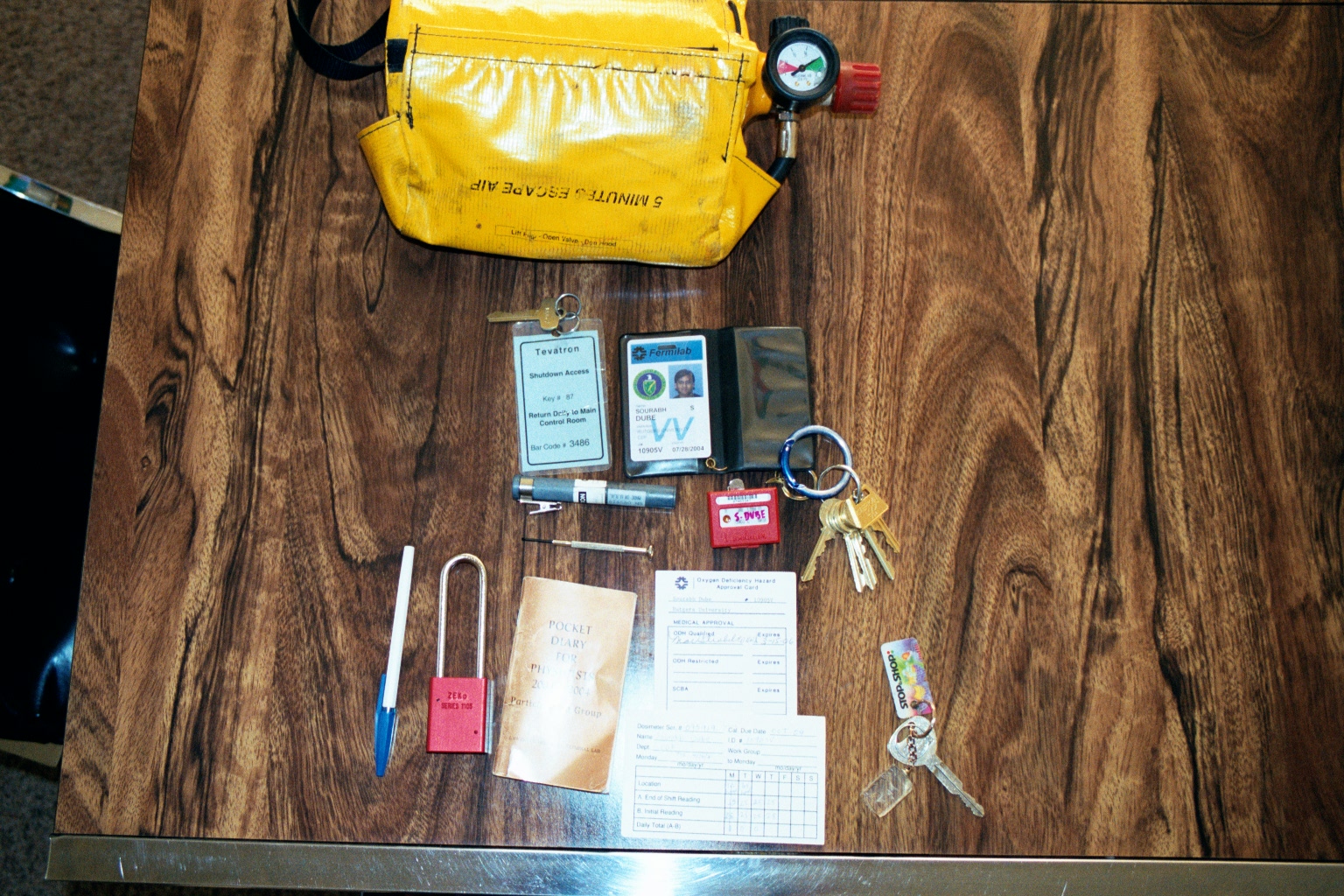 |
The left picture is taken while standing over the tunnel at the CDF detector. The access buildings can be seen at periodic intervals along the road.
On the right is a picture of the equipment to be carried into the tunnel. At the top, the big yellow pack is an emergency oxygen tank.
It holds about 5 mins of air which would allow us enough time to get out of the tunnel in case of an emergency. In the next row, the
key attached to the blue card is the access key for the tunnel, and my Fermilab identity card. The next row has a dosimeter (the long pen shaped object).
It measures the radiation dose that I would get while I am in the tunnel. Just below the dosimeter is a screwdriver for small things.
Next to that, the red badge is also to measure radiation exposure. In the bottom row is of course, a trusty Reynolds pen, and a red lock.
This lock is my personal lock to ensure LOTO: anyone entering the tunnel is required to have their own lock to
lock equipment like electricity outlets so that no one else can turn that equipment on while one is working on it.
Along with a small diary for any notes, there are two white cards. The top card verified that I was physically adequate to work in an ODH
environment (ODH stands for Oxygen Deficiency Hazard). The bottom card was to enter my daily radiation dose from the dosimeter. This ensured that I
did not exceed the daily limit of radiation exposure. In addition to this I also carried a monitor which beeped if the oxygen percentage in the
area I was working fell below 19.5%.
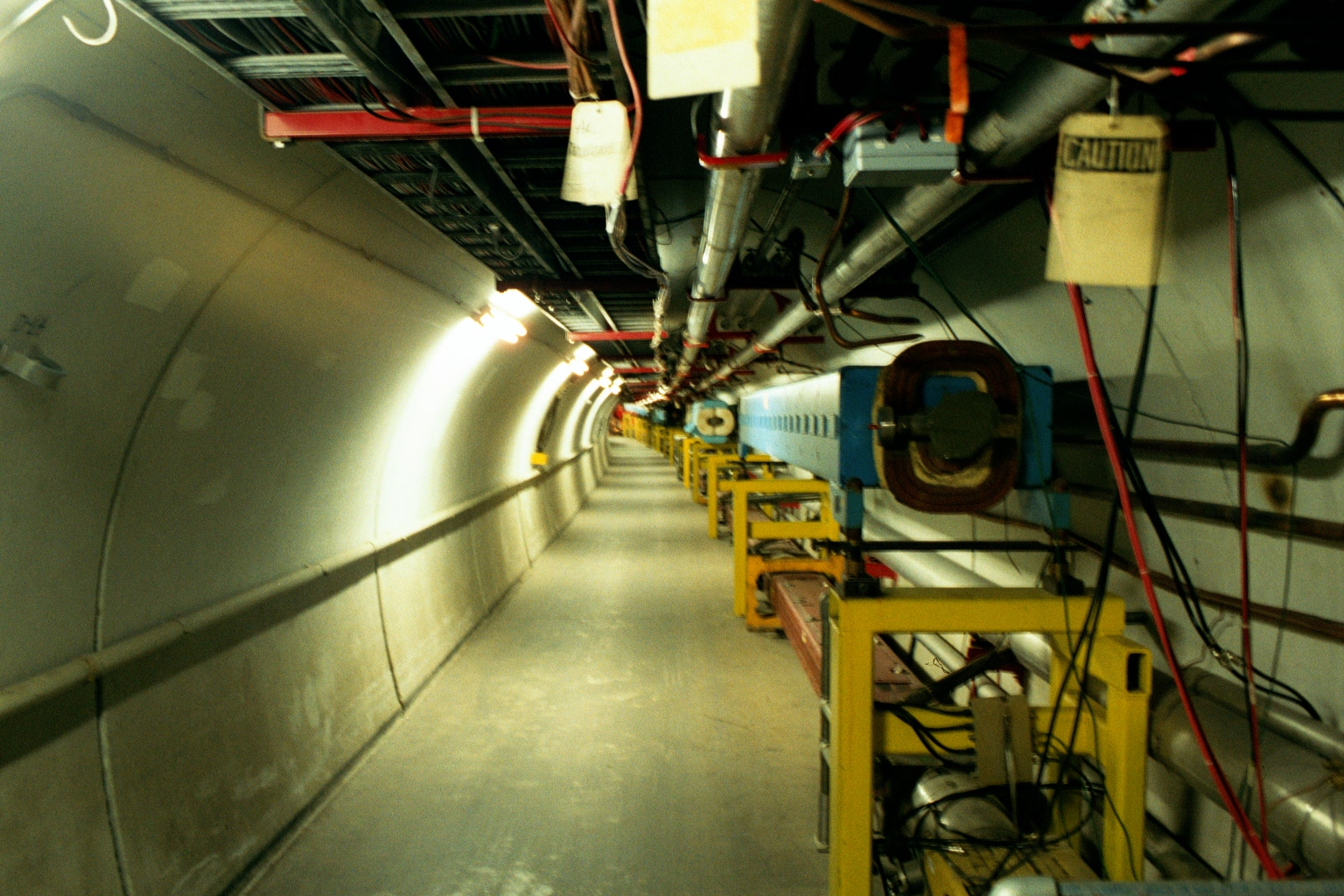 |
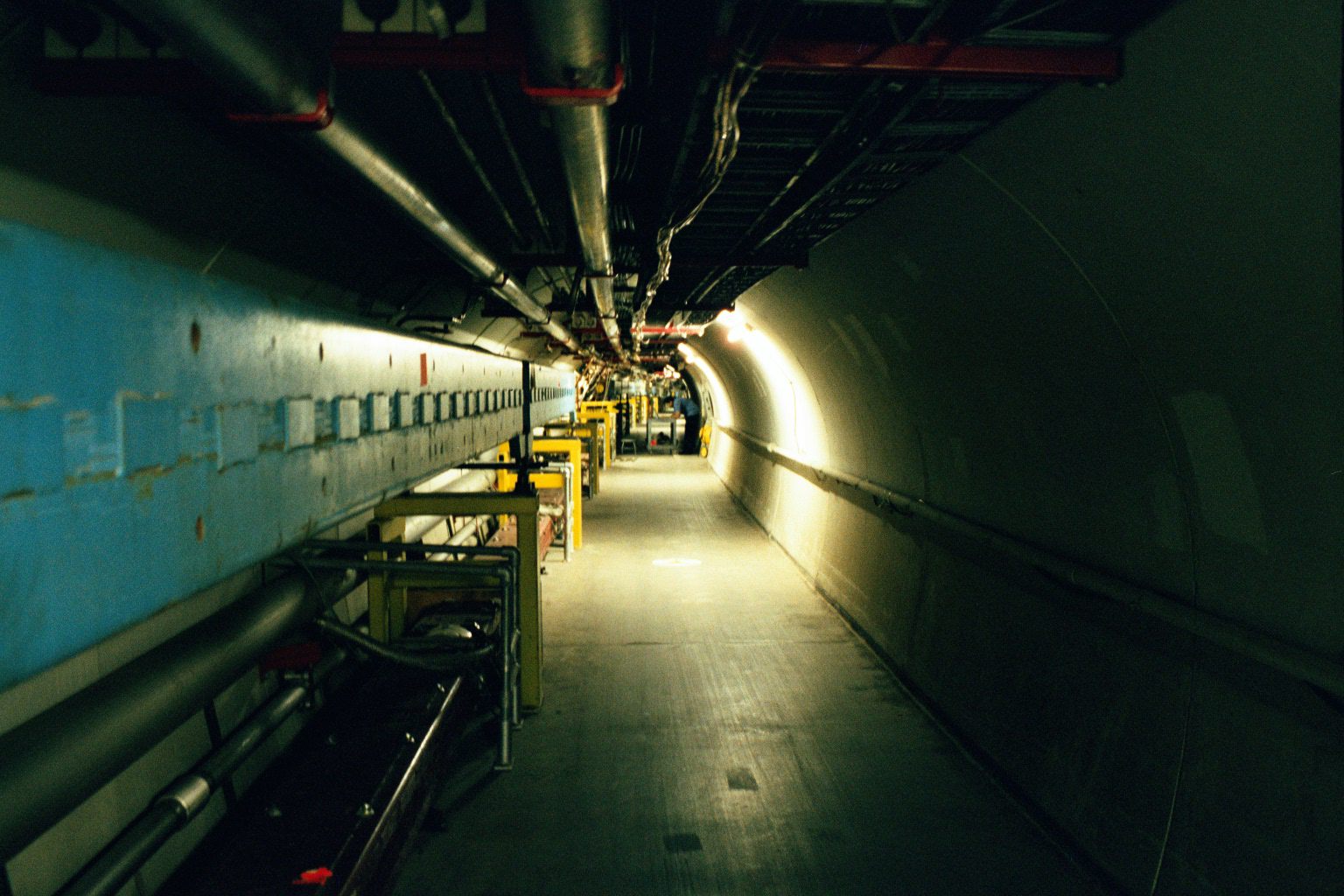 |
This is how the tunnel looks, upstream on the left, and downstream on the right. Upstream, one is looking towards incoming protons, and
downstream one is looking towards protons moving away. Of course, the anti-protons would travel in the opposite direction. The actual
beam pipe is near the ground.
On the left is a quadropole magnet (painted yellow) followed by cryogenic equipment connected to it on the right. The cryogenic
equipment keeps the magnets at a few degrees above absolute zero to keep them superconducting. The ring consists of a pattern
of one quadropole, cryogenics, and four dipole magnets repeated over. On the right is a picture of the red dipole magnet. The white
on the pipes is ice (they are cold enough to suck moisture out of the air and condense it as ice). The black horizontal object
is the digital protractor use to measure the roll. The measurements were fed directly into a database in an attached laptop.
The average roll of the magnets was measured to be about 3 milliradians, although certain sections of the beam had measurements of
35 mrad, with a couple of magnets going up to 100 mrad. As far as we could tell, the reasons for the roll were various - rusting
of the magnets, or water seepage which caused the floor level to change, or pumps mounted on the magnets which caused vibrations.
The sections with massive roll would be unrolled by the Beams Division of Fermilab. For most of the sections with minor roll (less
than 4 mrad), there would be no unrolling. Instead the measurements would serve as a data point in a study of roll characteristics
of the magnets over the years.
On the left is Farrukh sitting next to the actual beam pipe (without magnets). On the right is me standing
in front of the downstream end of the tunnel at D0. The equipment seen here is needed for the final
adustments to be made to the beam to bring it to a collision at the center of the DZero detector.
On the left is a picture of a Frisker. Once we came out of the tunnel, it was important to 'frisk' ourselves
for possible radioactive contamination. In case we would find something that is contaminated (clothes,
equipment), we would label it and keep it away for removal. Usually, the soles of our shoes would have some
radioactive dust, but fortunately we remained in the normal range at all times. On the right is an image
of the tunnel and ring looking down towards the E0 section.
Hope you enjoyed this historical trip from 2004.
You can read more about the Tevatron accelerator
here.
Get in touch to learn more about experimental particle physics today.







